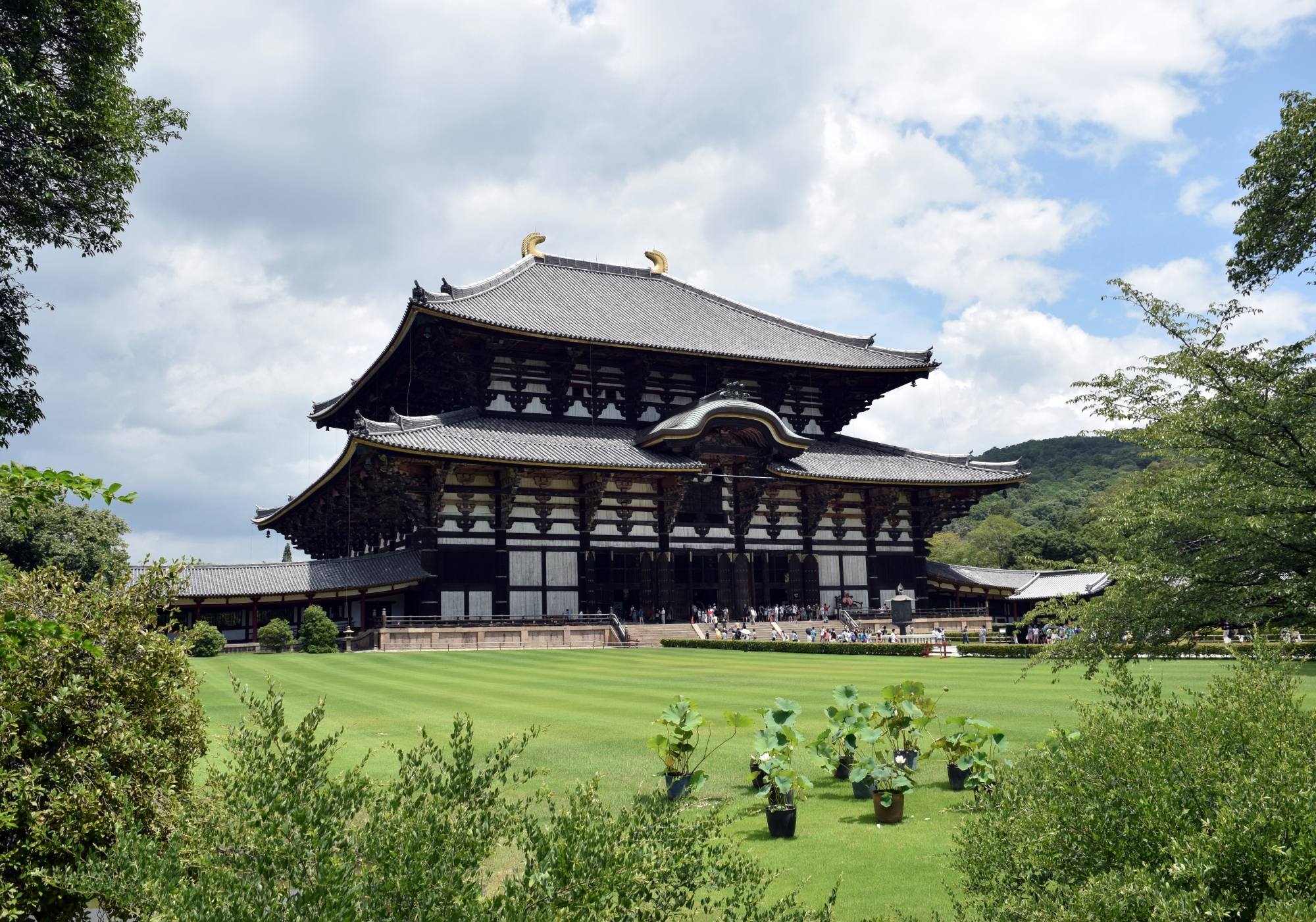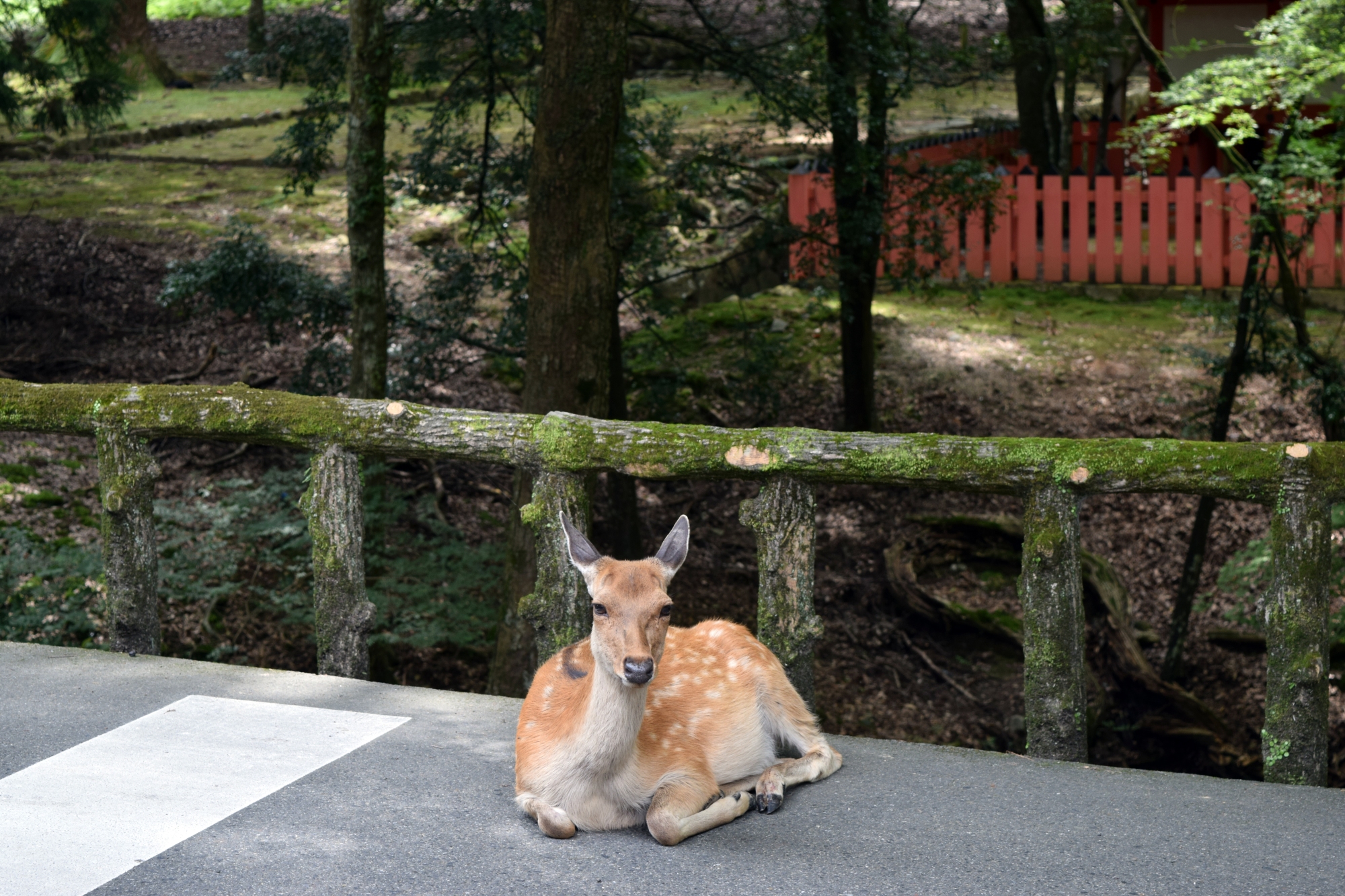The Largest and Oldest Wooden Buildings in the world are in Nara, Japan (and the oldest too)
Last Updated on April 18, 2024 by Adam Watts
Nara, Japan is famous for its deer. You’ve probably seen them on social media, bowing to tourists to receive snacks. That’s pretty cool, but it’s not the most interesting thing about the town. At least not for me. More interestingly to me, is that Nara contains both the largest wooden building in the world and the oldest wooden building in the world, and they are two completely different things.
The Largest Wooden Building in the World
The largest wooden building in the world is the Great Buddha Hall, at the center of Tōdai-ji Temple Complex, in Nara, Japan. It strikes me as odd that it has also burnt down twice.
Twice.
On one hand, it’s unsurprising, given that on a list of flammable things, wood ranks just below lighter fluid. On the other hand, after it burnt down the first time, apparently nobody looked past wood at, say, stone, and admired how well it doesn’t catch fire. Then they rebuilt the temple with wood again.
Now also consider that Japan is one of the countries most affected by natural disasters. Two out of the five most expensive natural disasters in recent history have occurred in Japan, costing $181 billion in the years 2011 and 1995 only. Japan has also been the site of some of the 10 worst natural disasters of the 21st century. The types of natural disasters in Japan include tsunamis, floods, typhoons, earthquakes, and volcanic eruptions. (Wikipedia)
So not only does Japan build things out of flammable materials, they do so in an environment where volcanoes, earthquakes, and tsunamis regularly wreak havoc.
Japan’s construction strategy is like trying to play Jenga on top of a moving train. At this point I’m amazed that the largest wooden building in the world has only burnt down twice.

The Oldest Wooden Building in the World
The oldest wooden building in the world is contained within Horyuji Temple complex, near Nara.

Its main pagoda was built around 600AD, burnt down 100 years later, was rebuilt, and is still standing over 1300 years later. A building built in 700AD has survived 1300 years of typhoons, floods, volcanic eruptions, and presumably many a carelessly discarded cigarette butt.
I think this bears repeating: the oldest wooden building in the world is in a country ravaged by natural disasters and has only been destroyed once, and that was 1300 years ago.
The engineering skill at work here is unfathomably good. Either that or it’s the magical deer.
Deer in Nara are Magical
Bear with me here. Other places have deer, of course. But as animals they’re considered skittish, hence the phrase “like a deer in headlights”. But in Nara, that phrase would mean “looks super chilled out and gets high all the time.”

The sika deer are regarded as messengers of the gods in the Shinto religion. Nowadays, the deer wander happily around with humans, making small talk and pulling pranks. Okay, that’s not true; they don’t pull pranks. But if they did, no one would be allowed to get their own back because, according to local folklore, deer from this area were considered sacred due to a visit from Takemikazuchi-no-mikoto, one of the four gods of Kasuga Shrine (also in Nara).
Mr. Takemikazuchi-no-mikoto was said to have arrived riding a white deer, so ergo deer were sacred.
(I say “were” considered sacred, because after World War II the deer were stripped of their divine status, presumably by a stipulation in the Japanese Instrument of Surrender agreement put there by a US general who’d fallen foul of a particularly mean prank pulled by a deer. Now they’re considered “national treasures”).
Instead, visitors are allowed, and indeed encouraged, to feed the deer crackers. When you do this, the deer will bow their heads to you. It’s very cute.
Whether it’s because of impressive construction techniques or magical deer, we should all be thankful because Nara is a very beautiful place and if you’re ever anywhere close to it, you should totally stop by for a visit.






Click here for more posts about the wonderful place that is Japan.
For activities to do in Japan, check out Viator’s tours below. Note that I’ll earn a small commission if you choose to purchase through these links, at no extra cost to you. Thanks for supporting this site! I also personally love Viator and we regularly use them for day trips on lots of our trips.






